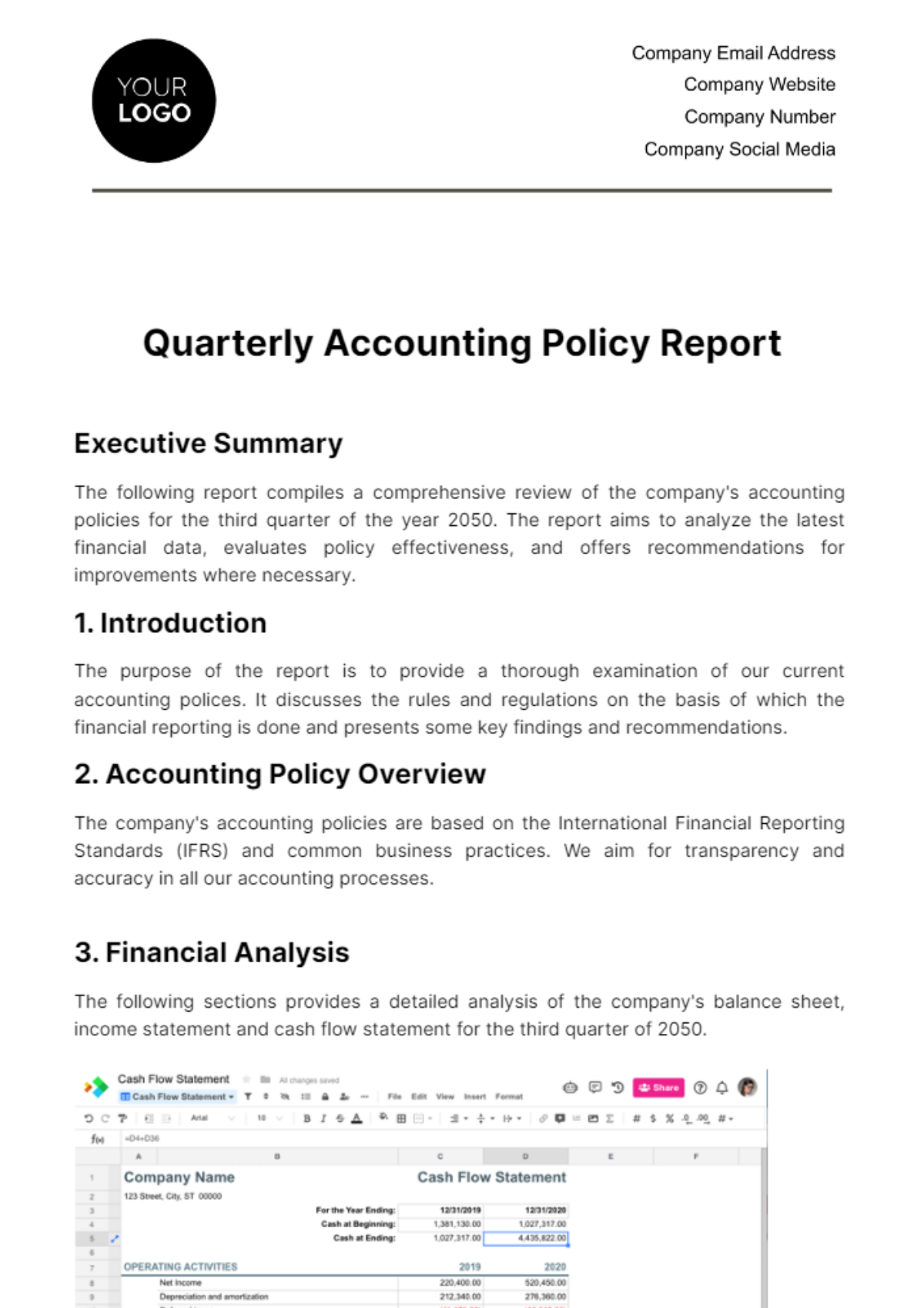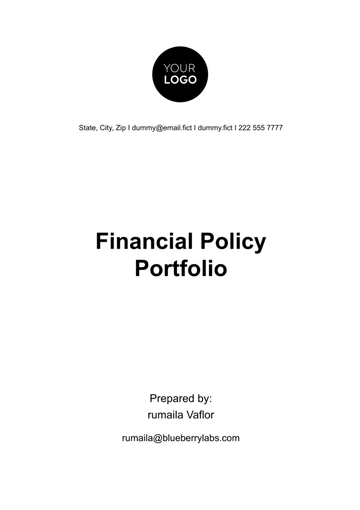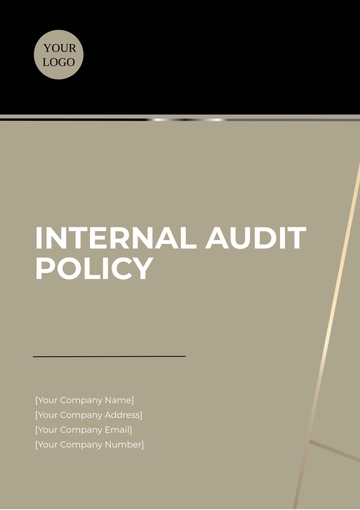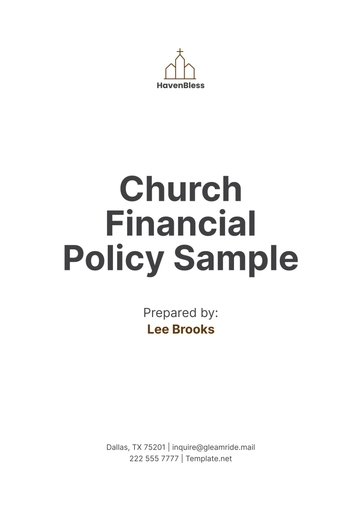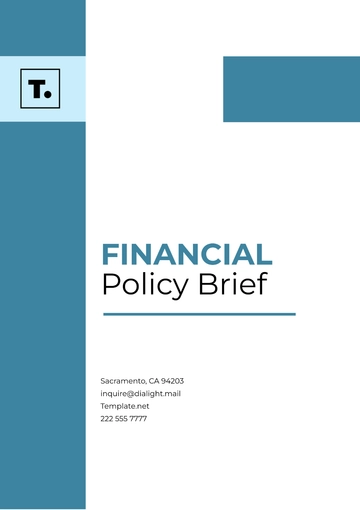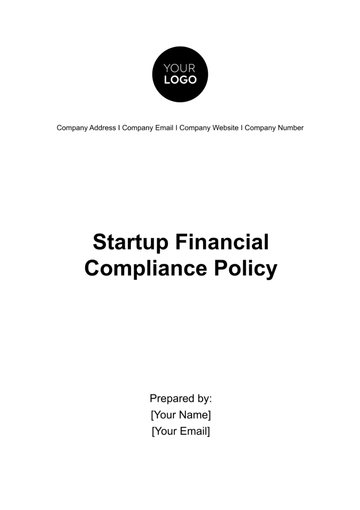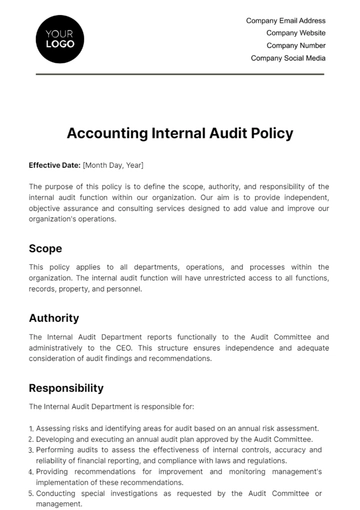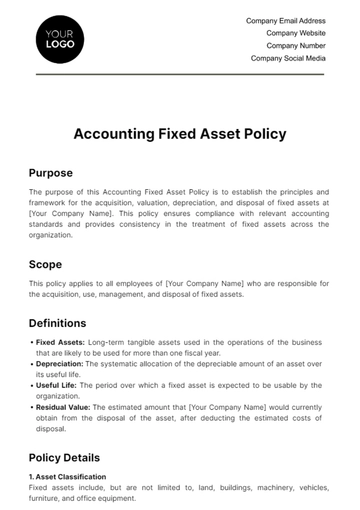Quarterly Accounting Policy Report
Executive Summary
The following report compiles a comprehensive review of the company's accounting policies for the third quarter of the year 2050. The report aims to analyze the latest financial data, evaluates policy effectiveness, and offers recommendations for improvements where necessary.
1. Introduction
The purpose of the report is to provide a thorough examination of our current accounting polices. It discusses the rules and regulations on the basis of which the financial reporting is done and presents some key findings and recommendations.
2. Accounting Policy Overview
The company's accounting policies are based on the International Financial Reporting Standards (IFRS) and common business practices. We aim for transparency and accuracy in all our accounting processes.
3. Financial Analysis
The following sections provides a detailed analysis of the company's balance sheet, income statement and cash flow statement for the third quarter of 2050.

(Table for Illustration Purposes Only)
a. Balance Sheet Analysis
As of September 30, 2050, total assets amounted to $55 million, an increase of 5% from the previous quarter. Total liabilities stood at $20 million which signifies a reduction of 2% as compared to last quarter. Shareholder equity increased by 8% due to the retained earnings.
b. Income Statement Analysis
Total revenue for the quarter was $25 million, a 6% increase YoY. Operating expenses decreased to $10 million, down 4% from last year. Net income showed a robust growth, reaching $10 million in this quarter versus $8 million in Q3 2049.
c. Cash Flow Analysis
The operating cash flow increased by 7% to reach $15 million. Investing activities led to an outflow of $5 million while financing activities created a cash outflow of $2 million, resulting in a net increase in cash of $8 million this quarter.
4. Policy Effectiveness
The current set of accounting policies have proven to be effective this quarter. Adherence to these policies has resulted in an overall robust financial performance that exceeded our forecasts.
5. Recommendations
While current accounting policies are effective, we recommend the adoption of a real-time, data-driven approach to financial analytics for better forecast accuracy. Potential benefits include increased efficiency, reduced operating costs, and improved profit margins.
6. Conclusion
The Q3 2050 performance showed a considerable improvement in financial stability and policy efficiency. While the financial aspects are encouraging, there is always room for further improvement and portfolio diversification.
Accounting Templates @ Template.net
